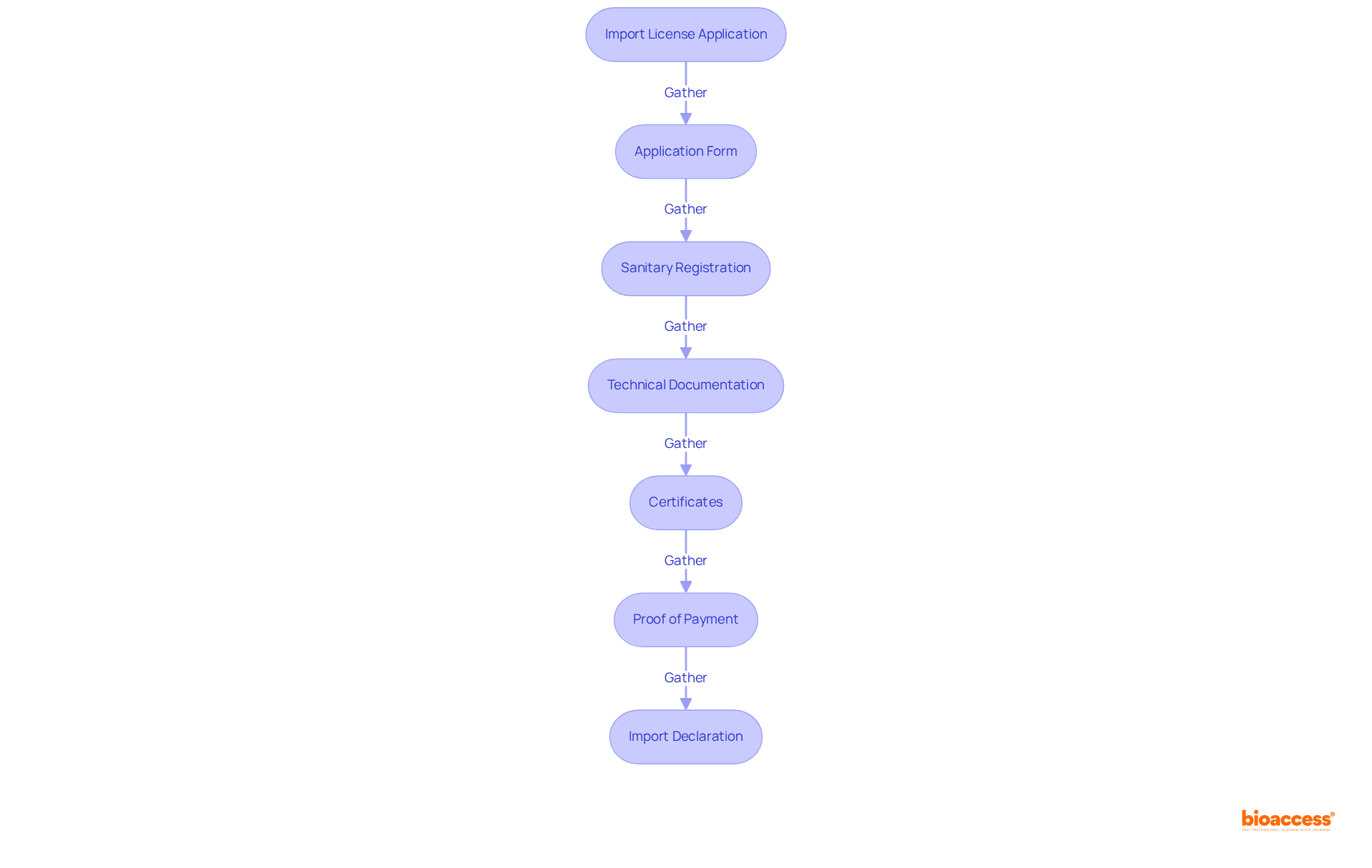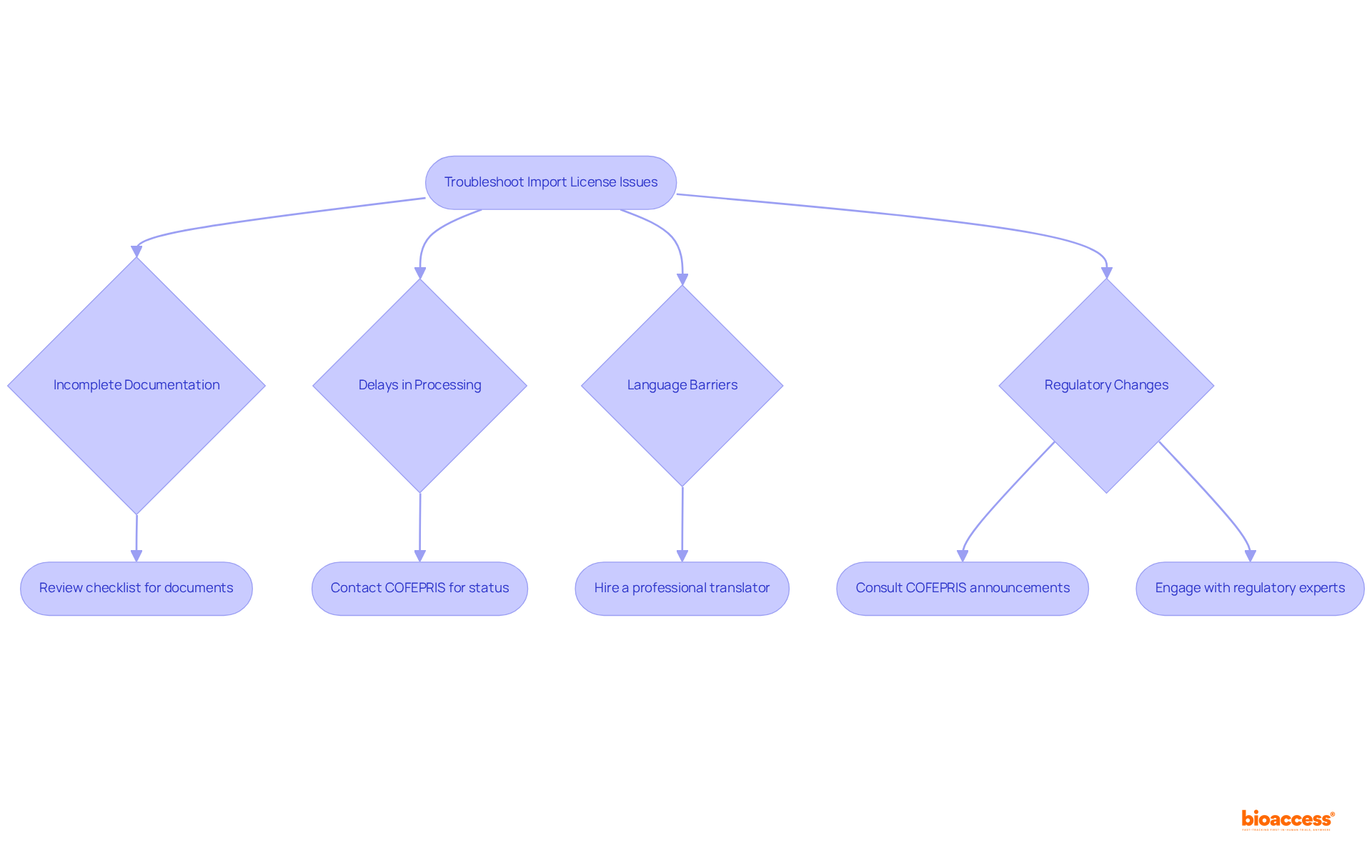


To obtain an import license for medical devices in Mexico, it is essential to grasp the regulatory framework established by COFEPRIS. This involves gathering the necessary documentation and submitting the application through the Digital International Trade Single Window (VUCEM). Additionally, one must be prepared to troubleshoot any common issues that may arise during the process. This article outlines these crucial steps, emphasizing the significance of thorough documentation and strict compliance with health standards. Such diligence facilitates a smoother application process, ultimately reducing potential delays or rejections.
Navigating the intricate landscape of medical device imports in Mexico presents a formidable challenge for manufacturers seeking to penetrate this burgeoning market. Governed by COFEPRIS, the regulatory framework necessitates a thorough understanding of the nuances involved in obtaining an import license, which is vital for compliance and success. This article serves as a comprehensive guide, designed to streamline the process by highlighting the essential steps and documentation required to secure an import license efficiently. However, potential pitfalls such as incomplete applications and regulatory changes can impede progress. Thus, how can companies ensure a seamless entry into the Mexican healthcare sector?
Before embarking on the importation process for medical equipment in Mexico, it is crucial to understand the regulatory landscape, including the requirements for an import license for medical devices in Mexico, governed by the Federal Commission for Protection against Sanitary Risks (COFEPRIS). This authority oversees all facets of medical equipment imports, including the import license for medical devices in Mexico, ensuring compliance with established health standards. Central to this framework is the General Health Law, which delineates the necessary regulations and guidelines for obtaining an import license for medical devices in Mexico.
Medical instruments require an import license for medical devices in Mexico and are classified into three categories—Class I, II, and III—each necessitating varying degrees of scrutiny and documentation for importation. For example, Class III products, which present the highest risk, require comprehensive clinical evidence, an import license for medical devices in Mexico, and a robust quality management system (QMS) certification, such as ISO 13485. The registration cost for a medical device in Mexico generally ranges from $5,000 to $10,000 USD, an important consideration for manufacturers.
Recent developments, including equivalence agreements with recognized jurisdictions, have streamlined the registration process, enabling manufacturers to leverage existing approvals. This can significantly expedite compliance, with the equivalency route potentially reducing the approval timeline to as little as six months, assuming no deficiency letters are issued. Conversely, receiving a deficiency letter may extend the resolution time by an additional 6-8 months, a critical factor to consider.
Remaining informed about these regulatory changes is vital for ensuring compliance with the latest standards and facilitating the import license for medical devices in Mexico. Collaborating with regulatory specialists can provide valuable insights into navigating the complexities of the General Health Law and COFEPRIS regulations, ultimately supporting successful market entry for medical products in Mexico, which includes acquiring an import license for medical devices. Additionally, understanding the growing demand for specific medical instruments, such as insulin pumps and continuous glucose monitoring systems, alongside the implications of Mexico's aging population on healthcare needs, can further inform strategic decisions.

To successfully apply for an import license for medical devices in Mexico, it is essential to meticulously compile several key documents. The following items are typically required:
It is crucial that all documents are translated into Spanish and accurately reflect the device's specifications to prevent potential delays. Licenses for bringing goods into the country are valid for 180 days, which is a significant factor for planning procurement strategies. Regulatory advisors stress that a thoroughly prepared dossier can greatly simplify the approval procedure, as frequent documentation problems often result in delays in license requests. Additionally, having a legal representative in Mexico is necessary for managing the importation process. By adhering to these guidelines, companies can enhance their chances of successful importation into the Mexican market, where obtaining an import license for medical devices in Mexico enables enrollment for clinical studies that is 50% faster than in traditional markets.

Once you have gathered all necessary documentation, the next step is to submit your import license request to COFEPRIS, which can be efficiently accomplished through the Digital International Trade Single Window (VUCEM). Begin by creating an account; if you haven't already, register for an account on the VUCEM platform to access its features. Next, upload your documents—carefully ensure that all required files are in the specified format, complete, and accurately labeled to avoid delays. After uploading, submit your request; a confirmation of submission will be provided, serving as evidence of your request.
It is crucial to track your application status using the VUCEM platform. COFEPRIS typically requires several weeks to process requests, with the best-case scenario for registration taking approximately six months. Regular tracking is essential for timely updates. Industry specialists emphasize that remaining proactive in monitoring status is vital to swiftly address any potential issues. COFEPRIS categorizes medical instruments into three groups:
These classifications can influence the processing duration and criteria for your submission.
![]()
Navigating the import license medical devices Mexico procedure presents several challenges that require attention.
Incomplete documentation is a common issue; applications often face rejection due to missing documents. To avoid this, meticulously review the checklist of required items and ensure all necessary documents are included before resubmission. Notably, approximately 70% of Class II products in Mexico conform to international standards, underscoring the importance of thorough documentation and compliance.
Delays in processing can also hinder your application. If your request is experiencing unexpected delays, reach out to COFEPRIS for an update. Having your reference number prepared can accelerate the inquiry. Additionally, engaging with third-party reviewers can significantly reduce approval timelines by up to 30%, making it a strategic move.
Language barriers may pose another challenge, as all documentation must be submitted in Spanish. If language issues arise, hiring a professional translator can help ensure that your submissions are accurate and compliant with local requirements.
Regulatory changes are another critical aspect to consider. Stay updated on any changes that could impact your application by regularly consulting COFEPRIS announcements or engaging with regulatory experts. As compliance specialist Katherine Ruiz notes, a thorough understanding of COFEPRIS's classification framework is essential for achieving successful market entry.
By adopting a proactive strategy and preparing thoroughly, you can effectively navigate the complexities of the licensing process and minimize potential setbacks. Be aware that errors in import forms or lack of contractual documentation regarding the import license medical devices Mexico can result in fines of up to US$4,500 for each import, emphasizing the need for precision in your submissions.

Understanding the import license process for medical devices in Mexico is essential for manufacturers aiming to penetrate this expanding market. By adeptly navigating the regulatory framework established by COFEPRIS and adhering to the General Health Law, companies can ensure compliance and facilitate their market entry. The steps outlined in this guide provide a clear pathway to obtaining an import license, underscoring the critical importance of thorough preparation and documentation.
Key insights discussed include:
By concentrating on meticulous documentation, tracking application status, and staying informed about regulatory changes, companies can significantly enhance their chances of successful importation. Furthermore, leveraging equivalence agreements can expedite the process, making it imperative for manufacturers to remain proactive and informed.
Ultimately, the importance of obtaining an import license for medical devices in Mexico cannot be overstated. As the healthcare landscape evolves, understanding and adapting to these regulations will be vital for manufacturers striving to meet the needs of a diverse patient population. Engaging with regulatory experts and staying updated on COFEPRIS guidelines will not only streamline the import process but also position companies for long-term success in the Mexican market.
What is the primary authority governing medical device imports in Mexico?
The primary authority is the Federal Commission for Protection against Sanitary Risks (COFEPRIS), which oversees all aspects of medical equipment imports.
What law outlines the regulations for obtaining an import license for medical devices in Mexico?
The General Health Law delineates the necessary regulations and guidelines for obtaining an import license for medical devices in Mexico.
How are medical devices classified in Mexico?
Medical devices are classified into three categories—Class I, II, and III—each requiring different levels of scrutiny and documentation for importation.
What are the requirements for importing Class III medical devices?
Class III products require comprehensive clinical evidence, an import license, and a robust quality management system (QMS) certification, such as ISO 13485.
What is the typical registration cost for a medical device in Mexico?
The registration cost generally ranges from $5,000 to $10,000 USD.
How have recent developments affected the registration process for medical devices?
Recent equivalence agreements with recognized jurisdictions have streamlined the registration process, allowing manufacturers to leverage existing approvals, which can expedite compliance.
What is the potential impact of receiving a deficiency letter during the approval process?
Receiving a deficiency letter may extend the resolution time by an additional 6-8 months, which can significantly affect the timeline for market entry.
Why is it important to stay informed about regulatory changes in Mexico?
Staying informed is vital for ensuring compliance with the latest standards and facilitating the import license process for medical devices.
How can regulatory specialists assist manufacturers in Mexico?
Regulatory specialists can provide valuable insights into navigating the complexities of the General Health Law and COFEPRIS regulations, supporting successful market entry for medical products.
What factors should manufacturers consider regarding the demand for medical instruments in Mexico?
Manufacturers should consider the growing demand for specific medical instruments, such as insulin pumps and continuous glucose monitoring systems, as well as the implications of Mexico's aging population on healthcare needs.